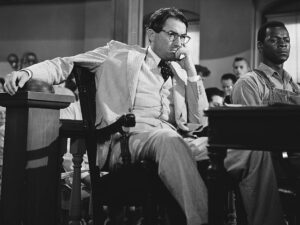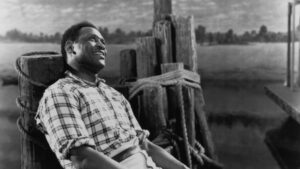She was stunned that the news that came to the Royal Hawaiian Hotel produced little more than a shrug from other vacationers.
Since it was formed, citizens of the United States have demonstrated that they have diverging ideas about the true animating force of their nation. Is it enough to have a shared interest in maximizing personal freedom? What does it mean when others are indifferent to a national tragedy?
Full citizenship and its protections were withheld from many over most of our history. But even with more enfranchised, it is apparent that a nation that spans a continent contains many differing values that can eclipse shared beliefs. Members of the European Union occupy another wide continental swath with some of the same challenges. Danes and Poles have cultural characteristics that are at least as wide as those separating native Texans from lifelong New Yorkers. Can citizens in so big an expanse still feel like that are part of the same tribe?
A picture of a culture that is more frayed quilt than a tightly-woven blanket came to mind in reading a revealing piece of literary detective work. It described the little-discussed dive into despair of the writer Joan Didion, a trenchant chronicler of American life. She was a leading American cultural critic who had the rare capacity to offer highly readable accounts of destructive forces swirling just beneath the surface calm of the American experience. Didion knew how to use a literary wide-angle lens to capture the national mood, noticing convulsions that others missed. Because she thought in terms of events laid out in oppositional narratives, she shed insight into alternate perceptions that others missed.
As Timothy Denevi notes in a recent piece in the New York Times, Didion and husband John were vacationing in Hawaii in 1968 and about to head into a sudden existential storm. In this unlikely place her natural California cool gave way to real symptoms of physical illness.
The Trigger
The specific event was June 4, the day Robert F. Kennedy was mortally wounded while leaving Los Angeles campaign appearance. She was stunned that the news penetrating the bubble of the Royal Hawaiian Hotel drew little more than a shrug from other vacationers. How could other Americans not recognize the loss of so temperate a voice while facing the morass of the Vietnam War?
Kennedy was very much a part of her stormy America she chronicled in collections of essays like The White Album, Slouching Towards Bethlehem and After Henry. Many saw him as an idealist that might pull the U.S. back from some of the national convulsions in the same year. Martin Luther King has been shot to death in April. Thousands of American servicemen were dying at a rate of 2800 a month in Vietnam. And the once outsized President Lyndon Johnson had slowly shrunk behind a vail of sullenness. He said he would leave after just one term. The “battle of Chicago” between protesters and the army at the Democratic National Convention was still to come a few months later.
It was during a performance in the hotel by singer Don Ho that Didion’s experienced a full realization of nation that had torn loose of its anchors. The singer had just stopped in mid-performance to pass on the breaking news of Robert Kennedy’s assassination, pausing to offer a spontaneous prayer he sung to mark the moment. But others in the room were apparently having none of it, shouting to the singer to “quit the hymns” and jeering his response to the shock. They still wanted the faux Hawaiian spectacle they had paid to see. The experience made her ill. In the aftermath she could not keep food down. But she still had the crystalline insight of a nation at war with itself.
No matter what your political feelings are, if you’re attached to the idea of the nation as a community—if you feel yourself to be part of that community—then obviously something has happened to that community. . . . It seemed as if these people did not count themselves as part of the community. They came from another America.”
A Warning of Things to Come
We are left to see an obvious pattern. This moment resonates because Didion’s sense of dislocation seems to have become a continuous sensation for many us. Like the shocking loss of a genuine American idealist, the daily conduct of many political figures today asks us to keep reliving the eminent dismemberment of the tribe. We must now experience the feeling that many within the culture occupy “another America:” less tied to the customs and norms that had defined the nation.
Didion died just weeks before the failed January 6 coup in the aftermath of the 2020 election. But in 1968 she already had the insight that the United States would not find its way back to the sturdy narratives Americans used to share. Even then it was clear that a kind of national self-sabotage was becoming the new normal.
![]()



